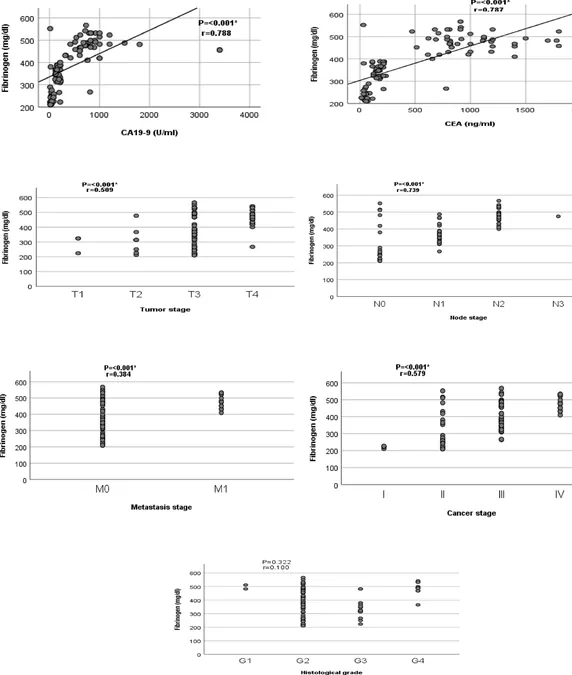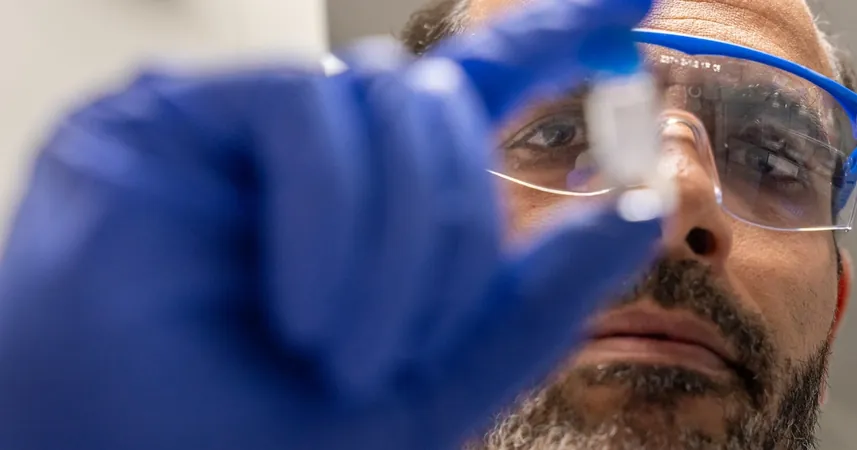
Unlocking the Secrets of Colorectal Cancer: How Coagulation Markers Could Predict Aggressiveness
2025-09-02
Author: Wei
Introduction: A Growing Concern in Global Health
Colorectal cancer (CRC) is not just another statistic; it's the third most diagnosed cancer and the second leading cause of cancer-related deaths worldwide. In 2020 alone, it accounted for 9.4% of all cancer fatalities. As cases continue to rise, particularly among the elderly, projections indicate that global CRC cases could more than double by 2035, particularly in developing nations.
Understanding the Role of Coagulation Markers
Past research has linked CRC with thrombosis, suggesting that clotting events can correlate with unfavorable outcomes. This study delves into how coagulation markers may act as prognostic indicators for CRC severity.
Research Aims and Methods Unveiled
This ambitious study involved a retrospective analysis of 100 patients diagnosed with CRC. Utilizing the 2018 AJCC TNM staging system, researchers examined clinicopathological features alongside routine coagulation tests, such as prothrombin time and fibrinogen levels. Their goal? To explore the correlations between these markers and the aggressiveness of the disease.
Key Findings: Fibrinogen and D-Dimer as Predictors
Significant correlations emerged between coagulation markers and cancer progression. High levels of fibrinogen and d-dimer were closely linked to tumor stage, lymph node involvement, and metastasis. The regression analysis demonstrated that both d-dimer (OR = 1.102, p < 0.001) and fibrinogen (OR = 1.002, p < 0.001) are independent predictors of high-risk CRC.
Clinical Implications: Personalizing Treatment Plans
The study opens the door for using fibrinogen and d-dimer levels as invaluable biomarkers in predicting CRC aggressiveness. These findings could significantly impact treatment strategies, enabling healthcare providers to tailor personalized plans that can improve patient outcomes.
The Mechanism Behind Elevated Levels of Coagulation Markers
So why do fibrinogen and d-dimer levels rise in CRC patients? Advanced tumor cells may increase fibrinogen production or release specific cytokines, suppressing fibrinolysis and elevating these markers. This assertion necessitates further exploration in future studies.
Bridging the Gap: A Call for Future Research
While the study offers compelling insights, it has limitations, including single-center data and a lack of follow-up assessments. However, it lays the groundwork for more extensive investigations into coagulation markers as predictors of CRC severity.
Conclusion: A New Era in CRC Prognosis
In summary, this research reveals a crucial connection between CRC aggressiveness and plasma levels of fibrinogen and d-dimer. As our understanding of CRC deepens, these findings hold promise for enhancing patient prognostication and treatment strategies.


 Brasil (PT)
Brasil (PT)
 Canada (EN)
Canada (EN)
 Chile (ES)
Chile (ES)
 Česko (CS)
Česko (CS)
 대한민국 (KO)
대한민국 (KO)
 España (ES)
España (ES)
 France (FR)
France (FR)
 Hong Kong (EN)
Hong Kong (EN)
 Italia (IT)
Italia (IT)
 日本 (JA)
日本 (JA)
 Magyarország (HU)
Magyarország (HU)
 Norge (NO)
Norge (NO)
 Polska (PL)
Polska (PL)
 Schweiz (DE)
Schweiz (DE)
 Singapore (EN)
Singapore (EN)
 Sverige (SV)
Sverige (SV)
 Suomi (FI)
Suomi (FI)
 Türkiye (TR)
Türkiye (TR)
 الإمارات العربية المتحدة (AR)
الإمارات العربية المتحدة (AR)